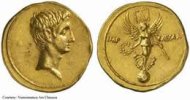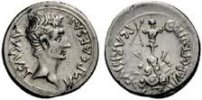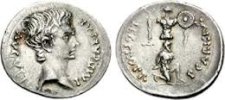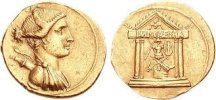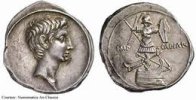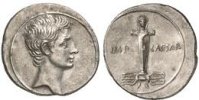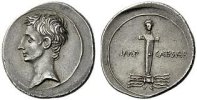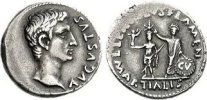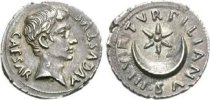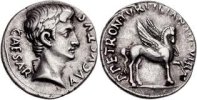Moze-Lomyo-Las (Romulus)
“The 69th Sumela Mikoto of Fuki Aizu Tyo was Kamu Taru Toyo Suki Kantaru Wake Toyo Suki Sumela Mikoto. In the 200th year of his reign, on March 6th, Moze-Lomyo-Las, political king of the five races, arrived in Hinomoto Kuni from the Sinai mountain in the land of Alabia Akaba. He came to pray in the Koso Kotai Jingu for the ancestors of the five races.”
The Koso Kotai Jingu is divided into an inner and an outer shrine. In the outer, one prays for the ancestors of Yomotsu Kuni (foreign lands); in the inner, for the ancestors of Hinomoto Kuni.
“While he was there, Moses made the stones of the Ten Commandments. There were three different Jikai, or sets of commandments: Omote Jikai, the front; Ura Jikai, the
back; and Shin Jikai, the true commandments.”
These would be the commandments belonging to the Kanagi, Sugaso, and Futonolito principles. Moses’ mission was to spread the Omote, or outermost principle.
“He engraved them on veined agate and other semiprecious stones (there were five pieces) and presented them to Sumela Mikoto”.
“Moze married Omuro Hime Mikoto, a granddaughter of the 63rd Sumela Mikoto of Fuki Aizu Tyo. He then remained for twelve years in Hinomoto Kuni, and returned to Sinai mountain.”
The dates given mean Moses came to Hinomoto Kuni 694 years before Jinmu decreed the change of era, or 3,344 years ago. The stones engraved by Moses are still kept in the Koso Kotai Jingu.
Omuro Hime later changed her name to Roma Hime Mikoto. Moses went to Italy with his family to create the Roman branch. He remained there until it was well organized, then left it in the care of his son Romulus. When the Takeuchi documents record the arrival of “Moze-Lomyo-Las”, they may be referring to more than one person. Lomyo-Las could either be a part of Moses’ name, or the name of a son who had come with him.
“Moze left Lomyo-Las and Numyo-Bon-Hilyus in Rome and returned to Hinomoto Kuni with Roma Hime on June 25th of the year 421 of the same reign: in the time of the 69th Sumela Mikoto of Fuki Aizu Tyo. He died on November 25th of that same year, at Hotatsu Mountain in the region of Notono.”
The above excerpts are quoted from the book of Colonel Ikutaro Yano. Colonel Yano, a naval officer, was a serious student of the ancient documents.
When the Second World War broke out, he was put in prison for speaking out against the war and the entire policy of the government. He died in his cell, from poison.
In prison, he wrote a series of essays which were smuggled out by friends — as a colonel, his influence probably gave him some latitude of action. These papers were handed on to his wife, who was expressly forbidden to open them until the end of the war.
The official report said that he had died of disease. When his wife came to claim his body, it showed clear evidence of poisoning.
After the war, Mrs. Yano published her husband’s essays.
Colonel Yano had studied the Takeuchi documents before the war, and apparently made copies of some of them. I mentioned earlier that a great many documents were destroyed at the end of the war, burned in Tokyo by incendiary bombs. The documents
Colonel Yano refers to no longer exist, but what he says is confirmed by the notes of Ogasawara Sensei, my late teacher. Before the war, Ogasawara Sensei worked for Colonel Yano for a short time as his secretary.

 ...Thanks Again, L
...Thanks Again, L